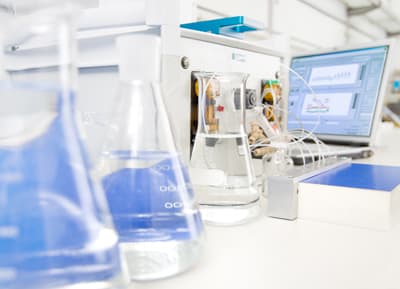Recognize the Relevance of Water Screening in Maintaining Compliance With Health Criteria
In the realm of public health and wellness, comprehending the value of water testing is important for preserving compliance with stringent health standards stated by reliable bodies like the that and EPA. This method functions as a frontline defense versus the infiltration of hazardous pollutants, ranging from microbial pathogens to unsafe chemicals. Yet what are the exact techniques used in water testing, and just how do they make certain that our most essential source remains unpolluted? As we check out these aspects, the broader effects for governing compliance and environmental sustainability start to unfold, welcoming additional contemplation on this essential topic.
Secret Wellness Criteria for Water
Making certain the security and top quality of drinking water is paramount, as it directly affects public health. Strict wellness standards are established to guard individuals from waterborne illness and contaminants that can cause adverse health and wellness results. The Globe Health Organization (THAT) and nationwide agencies like the Epa (EPA) in the USA set guidelines and regulative restrictions for various physical, chemical, and biological specifications in drinking water.
These requirements are based upon extensive scientific research study and are regularly examined to include technological developments and new findings. Secret specifications consist of microbial impurities such as bacteria and viruses, chemical pollutants like lead and arsenic, and physical attributes such as turbidity and pH degrees. Conformity with these requirements makes certain that water is devoid of damaging materials and is cosmetically pleasing to the consumer.
Water screening plays an important function in confirming compliance with these health standards. Regular monitoring and testing aid recognize possible problems before they position a considerable health threat, permitting prompt treatment and remediation. By adhering to these criteria, water providers can keep public self-confidence in the security of the area's water supply, therefore guarding public health and wellness efficiently.
Common Contaminants Identified
When examining water quality, what are the most common impurities that tend to be identified? Microbial pathogens, consisting of microorganisms like Escherichia coli and protozoans such as Giardia and Cryptosporidium, are frequently located in water resources, positioning considerable wellness dangers if consumed.
Chemical contaminants are also a main concern. Nitrates, commonly resulting from farming plant foods, can lead to severe health issues, especially in babies. Heavy steels such as lead, arsenic, and mercury, usually presented via commercial release or natural natural resource, can have long-lasting hazardous results. Volatile organic compounds (VOCs) and pesticides, byproducts of agricultural methods and commercial tasks, additional add to water contamination.
Not natural substances such as fluoride and chlorine, although occasionally deliberately included in water for health and wellness advantages, can end up being troublesome at elevated degrees. Lastly, arising impurities, consisting of drugs and personal care items, are progressively being found, increasing issues about their possible effect on human health and wellness and communities. Addressing these pollutants is important for safeguarding public health and wellness and ensuring water top quality compliance.
Methods of Water Screening
Water testing's precision is essential for identifying pollutants and making sure security conformity. One widespread technique is spectrophotometry, which measures the absorption of light by chemical compounds in the water, consequently recognizing components like nitrates and phosphates.
Chromatography is another sophisticated technique made use of, specifically for natural contaminants. By separating mixes right into private elements, it permits for comprehensive analysis of complicated toxins. Gas chromatography and fluid chromatography are commonly used variations, each suited for different compound types.
Microbiological testing is vital for identifying virus such as microorganisms, viruses, and protozoa. Strategies such as membrane layer filtering and multiple-tube fermentation are utilized to culture and identify microbial presence. These approaches are vital in guarding public health and wellness by guaranteeing microbial safety.

Advantages of Normal Screening
Comprehending the various techniques of water screening highlights the requirement of regular screening methods to maintain water top quality. Regular water screening serves as a proactive procedure to recognize potential impurities prior to they escalate into severe health threats. By constantly keeping an eye on water quality, companies can detect contaminants such as bacteria, hefty steels, and chemical deposits early, permitting prompt interventions that stop health risks and costly removal efforts.

Furthermore, normal screening guarantees that water supply comply with recognized health and wellness requirements and guidelines. This compliance is important for preventing legal fines and maintaining the count on of stakeholders and customers. Consistent water high quality analyses help determine patterns or changes in water structure, giving valuable data that can assist functional choices and source monitoring methods.
In fields such as metropolitan water supply, medical care, and food handling, preserving high water quality criteria is Recommended Site indispensable to securing public health and wellness. In general, the benefits of regular water screening prolong beyond conformity, improving operational performance, public security, Clicking Here and ecological stewardship.
Tips to Ensure Conformity
To guarantee conformity with water quality laws, organizations have to execute an organized approach including both corrective and preventative measures. A comprehensive threat assessment ought to be carried out to recognize potential contamination sources and vulnerabilities within the water system. This analysis informs the development of a tailored water administration strategy that lays out specific examining methods, frequency, and criteria called for to satisfy regulative requirements.
Subsequent to the planning phase, organizations ought to establish a routine for routine water screening that sticks to both national and local guidelines. Utilizing accredited labs makes certain the precision and integrity of examination outcomes. Any kind of discrepancies from appropriate water top quality criteria must motivate instant rehabilitative activities, such as system cleansing, repair services, or modifications in therapy processes.
Moreover, preserving thorough documents of all screening activities, results, and corrective actions is important for demonstrating conformity throughout audits and examinations. Regular training and updates for personnel associated with water administration processes are crucial to guarantee they Homepage are mindful of existing guidelines and finest practices.
Conclusion
Routine water testing is necessary for maintaining conformity with health and wellness standards set by companies such as That and EPA. Positive surveillance shields public health, supports governing compliance, and fosters self-confidence in water quality administration.
In the world of public health, recognizing the significance of water testing is indispensable for preserving conformity with rigorous health requirements established forth by authoritative bodies like the WHO and EPA. By sticking to these criteria, water providers can maintain public confidence in the security of the area's water supply, thereby protecting public health and wellness properly.

In fields such as metropolitan water food, health care, and supply processing, maintaining high water top quality criteria is important to safeguarding public health.